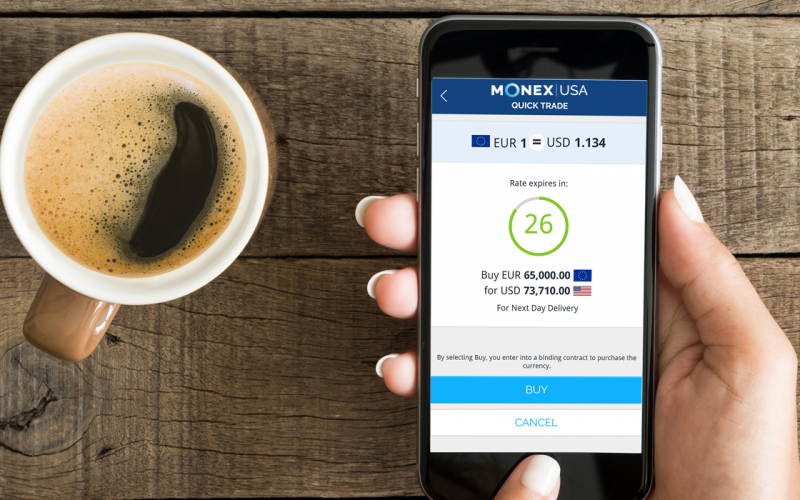Globalization is a force that impacts all aspects of business, including the international accounts payable (AP) function.
Overseas suppliers increasingly invoice U.S. based companies in their home currency such as Euros, Japanese yen, British pounds, Canadian dollars, or a wide range of other currencies from around the world. International markets offer positive growth opportunities but also expose companies to foreign currency risk. The good news is that a sound risk management policy around foreign currency exposure can help mitigate these risks in managing costs and ultimately protect hard-earned profits. Globalization is a force that impacts all aspects of business, including the international accounts payable (AP) function. Overseas suppliers increasingly invoice U.S. based companies in their home currency such as Euros, Japanese yen, British pounds, Canadian dollars, or a wide range of other currencies from around the world. International markets offer positive growth opportunities but also expose companies to foreign currency risk. The good news is that a sound risk management policy around foreign currency exposure can help mitigate these risks in managing costs and ultimately protect hard-earned profits.
Recognize Currency Volatility, Have a Strategy
Currency markets constantly move, either up or down. In fact, since March 2014 the United States Dollar (USD) has strengthened over 20% against the Euro. If you have a 10% to 15% profit margin, currency volatility in this range could easily wipe out your profits. Since none of us has a crystal ball to accurately predict the future, guessing on future currency rates is a gamble that is best avoided. The first component, therefore, of an effective international accounts payable risk management approach is simply to consciously recognize that currency volatility can increase costs and negatively impact profit margins. You might consider asking foreign suppliers to invoice you in USD thinking that this will eliminate your foreign currency risk. It won’t. While this approach makes accounting entries easier, keep in mind that your foreign supplier will need to compensate for the exchange fluctuation and pad their price by 5% to 15% on average to account for the delay from when they invoice you to when they receive your payment. Some foreign companies, in fact, count on this extra price markup as part of their U.S. market strategy to enhance profits.
Plan with Forwards
So, how does a company avoid these price hikes and yet protect against foreign exchange risk in the global market? One sound strategy that many companies use is to request invoices in the supplier’s home currency and then hedge the risk of this currency with a forward. A forward contract simply allows you to buy currency today for use at a later date, typically up to 12 months out, although most forwards are in the two- to six-month range. Forwards are considered insurance against the possibility of losing money due to exchange-rate volatility. For example, if today’s forward rate on the Euro is 1.19 and you have an invoice or a project that requires payment of €100,000 in 60 days, you can lock in a forward for delivery in 60 days for a cost of USD $119,000. You lock in the rate now and pay the full amount 60 days later. This protects the invoice from any change in the Euro cost when it comes time to pay and conserves your cash flow because you pay for the forward in 60 days, not when you agree to buy it. If you did nothing and the USD/Euro rate dropped to 1.30 in 60 days, your cost is USD $130,000, an increase of $11,000. Forwards ensure that foreign currency costs are consistent with your budget. This way you easily avoid the 5% to 15% price increase your foreign suppliers add to their U.S. dollar prices, and you also protect your budget against exchange-rate volatility.
The only risk you have after buying a forward is the opportunity cost of the dollar increasing in value. If the dollar increases in value against the Euro (say 1.16 in the Euro example or USD $116,000) and you did not buy a forward contract, you would have been better off waiting. However, buying a forward eliminates the risk of an unknown future. In the end it depends on your company’s tolerance for risk. Do you want to protect against risk or take your chances? It’s important to stress that often doing nothing is more risky than hedging your risk with a forward. Companies may think forwards are too complicated or simply don’t know where to start. Some organizations may also believe the currency percentage swing in the market isn’t large enough to worry about. However, a 5% to 15% cost swing is significant and should positively motivate most international accounts payable professionals to hedge this exposure with the insurance forwards offer.
Forward Purchasing Policy
Many companies implement a forward purchasing policy they can follow to manage the risk of foreign expenses. A forward purchasing policy gives a company structured guidelines to follow when protecting its budget so that this function is less ad-hoc and provides continued protection. This raises the question of what a forward purchasing policy should look like. Many companies understand they have an exchange risk but do not know the exact amount or time. You may have an invoice that is only paid on delivery, or you may have a project with several payments over an extended period of time. How do you protect against this currency volatility?
The policy should be customized to fit the needs and structure of your company’s particular situation. Companies can call on their financial provider, who can help construct this policy to fit the organization. Some companies will only cover a set percentage amount of the invoice, giving the flexibility of any unforeseen changes to the total. For example, if you owed €50,000, a 50% forward purchasing policy covers half of the exchange rate volatility with a €25,000 forward. When the actual payment date approaches, a decision can be made on purchasing the balance as spot or an additional forward. Some organizations will lock in to forwards on an invoice-by-invoice basis covering some or all of the currency need. Some companies go so far as to look at their historic currency needs from prior years and buy a portion of that amount six to 12 months into the future to flatten the risk of exchange-rate fluctuation. They do this because they know historically they have a set need but that the amount may vary. Buying the mean amount assures they do not overbuy. Then, as the payment date nears, they will know their exact need more clearly and can protect further with another forward as they see favorable rates in the market or wait until the actual payment date and buy the balance at current spot market rates.
It’s important to stress again that doing nothing is, in effect, a gambling policy that could end up costing you more. Without insurance, you have a 50-50 chance of losing money on the currency movement. Take the first step and put in place an appropriate forward purchasing policy. To do so, speak with your financial services provider to review a forward purchasing policy that is appropriate for your organization. This prudent approach will protect your company against the adverse impact of foreign exchange movements. Forwards offer a conservative way to insure against currency volatility.





